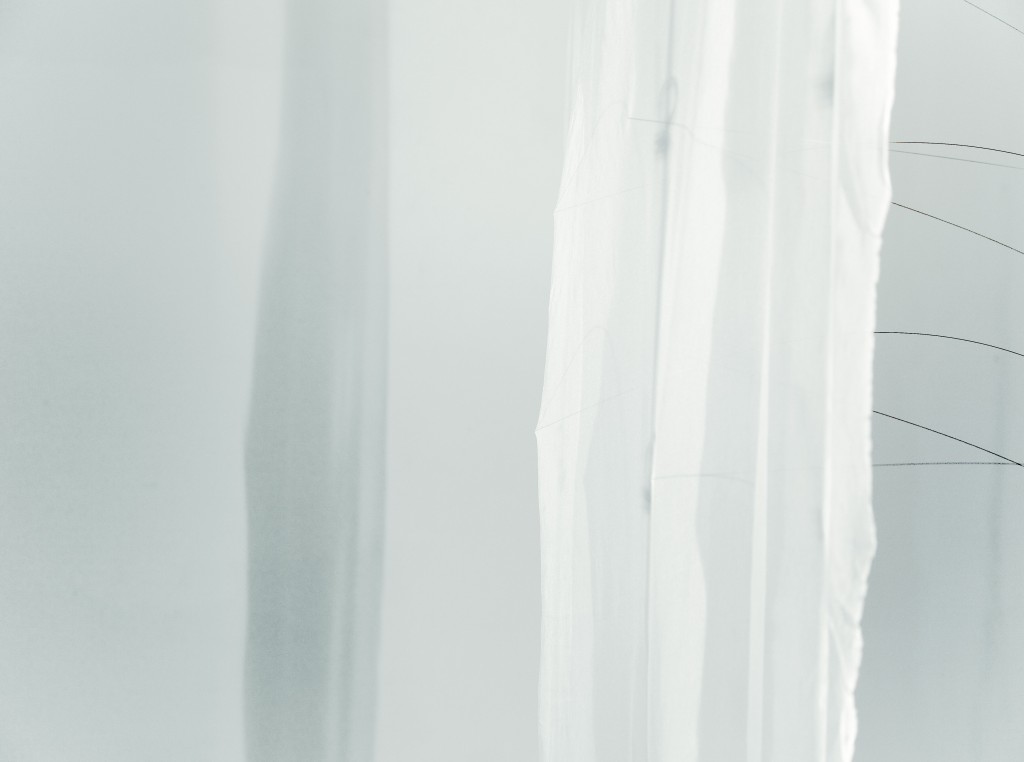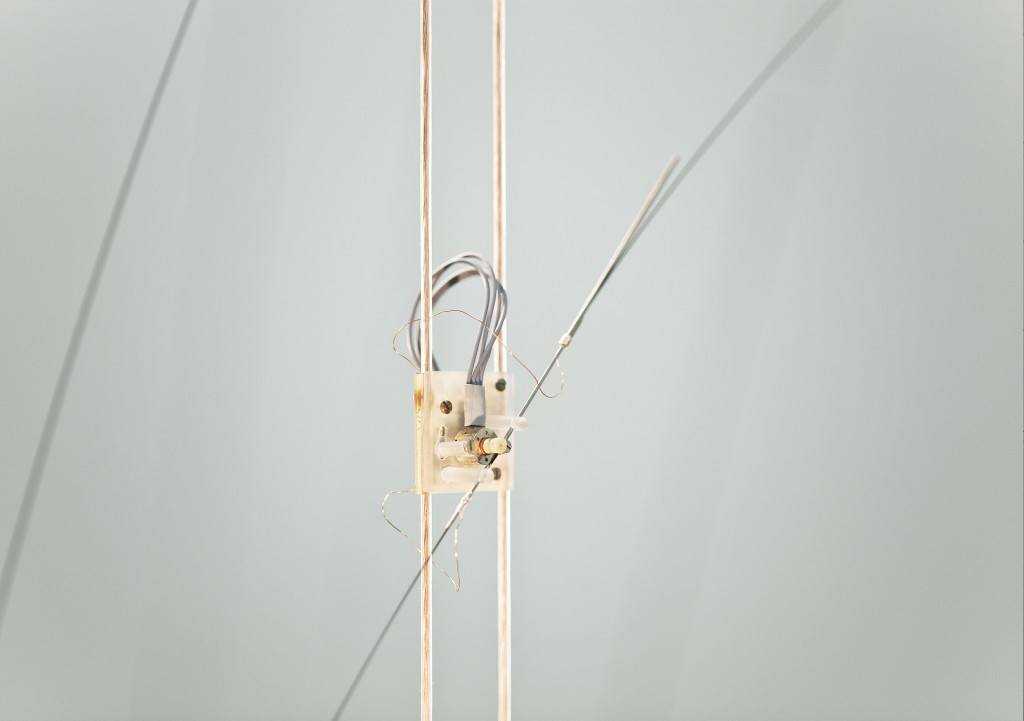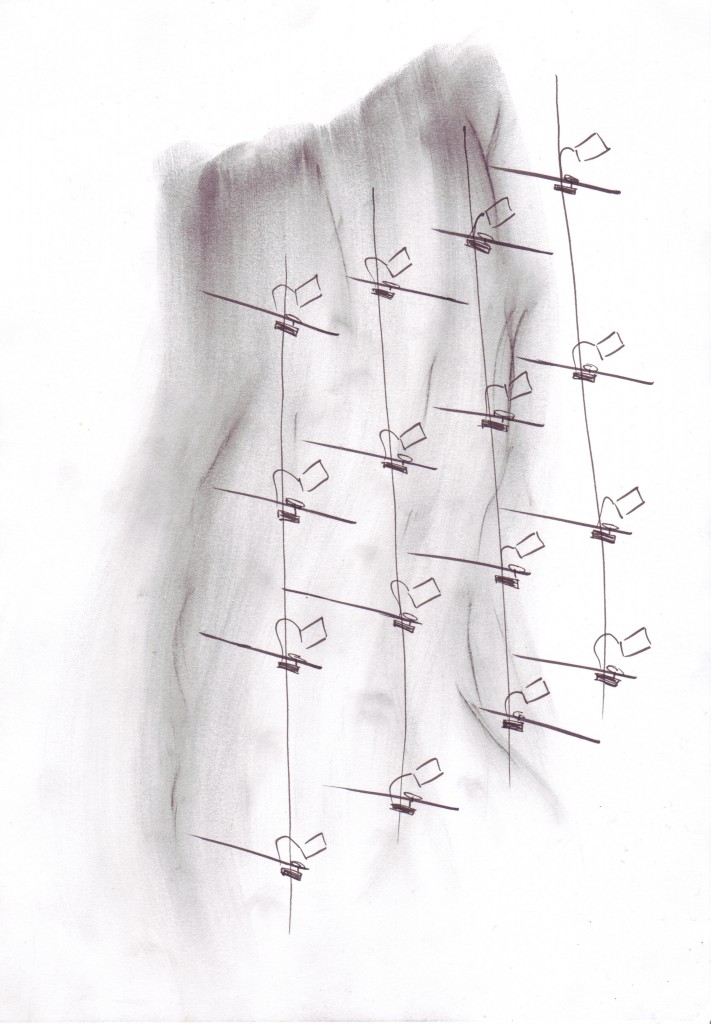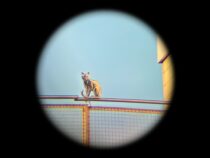|
A silk cloth hangs from the ceiling of the room all the way to the floor. As people
move through the space the air surrounding them also moves, in turn causing
the cloth to move.
Behind the cloth is a group of electromechanical units. Each unit has a motor
which moves a thin carbon fibre rod. First the rod gently approaches the cloth
and in doing so, slides through two steel tubes which are electrically isolated
from one another. If the rod comes into contact with the cloth, it will slightly
bend. By bending, the rod connects the two steel tubes and thus completes an
internal signal circuit. This causes the rod to move back away from the cloth for
a moment.
The silk cloth is also transformed by the touch of the rod. The retreat of the
cloth stimulates the surrounding modules to approach it again, and thus transforming
it further, resembling an imprint like that of a neural network.
Thus, the electromechanical modules made of carbon fiber rods and circuits
appear as models of artificial neurons that are interconnected with each other
via the cloth and with the people in the room through the transmitting movement
of the air. Thereby, the incidential interaction of the visitors with the cloth
bears a resemblance to the effect of the electromechanical modules.
The attempt to determine the position of the cloth in the room thus leads to
a continuous interplay of those present, drawing on the past, reflected in the
ever-changing imprint of the silk cloth.






|















